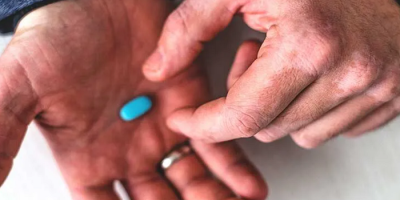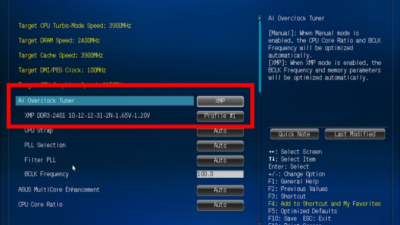Have you ever wondered where your knee pain is originating? There are many different parts of the knee that can be causing discomfort, and it can be difficult to determine the source on your own. That’s why we’ve put together this handy chart, which outlines the common locations of knee pain and their causes. With this information, you’ll be able to better understand what’s causing your discomfort and find relief. So read on for all the details!
What Are the Different Locations of Knee Pain and What Do They Mean?
Knee pain is a common complaint that can have a variety of causes. The knee is a complex joint, and different locations of knee pain can point to different underlying problems. For example, knee pain that occurs on the outside of the knee is often indicative of IT band syndrome, while knee pain on the inside of the knee is often a sign of patellar tendinitis. Likewise, knee pain at the front of the knee can be a symptom of patellofemoral syndrome, while knee pain at the back of the knee may be indicative of a Baker’s cyst. By understanding the different locations of knee pain, you can get a better sense of what might be causing your symptoms. With this information in hand, you can then work with your doctor to develop an effective treatment plan.
Common Causes of Knee Pain in Each Location
knee pain is a common complaint that can have many different causes. In order to determine the best course of treatment, it is important to first identify the location of the pain. The knee is divided into three main parts: the medial compartment, the lateral compartment, and the patellofemoral compartment. Each compartment contains different structures, and knee pain in each location can have different causes.
Medial knee pain is often caused by problems with the medial collateral ligament (MCL), which runs along the inside of the knee joint. This type of knee pain is common in athletes who play contact sports, as the MCL can be injured by a direct blow to the outside of the knee. Lateral knee pain is typically caused by problems with the lateral collateral ligament (LCL), which runs along the outside of the knee joint. This type of knee pain is often seen in athletes who participate in sports that involve cutting or pivoting movements. Patellofemoral knee pain is usually caused by problems with the patella (knee cap), such as patellar tendinitis or patellar tracking disorder. This type of knee pain can be aggravated by activities that involve repetitive knee flexion, such as stair climbing or running.
If you are experiencing knee pain, it is important to see a doctor or other healthcare provider for an accurate diagnosis. Only a healthcare professional can determine the cause of your knee pain and recommend the best treatment options for you.
How to Treat Knee Pain Based on Its Location
Knee pain is a common problem that can be caused by a variety of factors, from injuries to arthritis. While knee pain can be frustrating and debilitating, treatment options are available that can help to relieve pain and improve knee function. The first step in treating knee pain is to identify the location of the pain. The knee is divided into three main regions: the medial (inner) knee, the lateral (outer) knee, and the patellofemoral joint (the knee cap). Each of these regions can be further divided into smaller areas, and each area is associated with different types of knee pain. For example, medial knee pain is often caused by inflammation of the Semimembranosus bursa, while lateral knee pain is commonly caused by iliotibial band syndrome. Once the location of the pain has been identified, specific treatments can be targeted to that area. For example, medial knee pain may be treated with icing and anti-inflammatory medication, while lateral knee pain may be treated with stretches and physical therapy. By understanding the various causes of knee pain and how they relate to specific areas of the knee, you can develop an effective treatment plan to help relieve your symptoms.
When to See a Doctor About Your Knee Pain
Knee pain is a common condition that affects people of all ages. The knees are complex joints that are constantly in motion, so it’s not surprising that they are susceptible to injury and degenerative diseases. Knee pain can be caused by a wide range of factors, from simple overuse to more serious conditions like arthritis. If you’re experiencing knee pain, it’s important to see a doctor to get an accurate diagnosis and treatment plan. But how do you know when it’s time to see a doctor about your knee pain?
There are a few different things you can look for to determine whether you need to see a doctor about your knee pain. First, check the location of your pain. Knee pain can be felt in the front, back, or sides of the knee joint. It can also radiate up into the thigh or down into the calf. Second, take note of the severity of your pain. Knee pain can range from mild discomfort to debilitating agony. If your pain is severe or persistent, it’s definitely time to see a doctor. Third, consider the onset of your pain. Knee pain that develops gradually is usually less serious than sudden, sharp pain.
Finally, evaluate your recent activity level. Knee pain that occurs after intense exercise or activity may be caused by overuse or injury. If you’re not sure whether you should see a doctor about your knee pain, it’s always better to err on the side of caution and make an appointment with your healthcare provider.
Conclusion
Knee pain can oftentimes be extremely frustrating. Pain on the outside of your knee may indicate tendinitis, while inner knee pain may be due to arthritis. If you are unsure what is causing your knee pain, it is always best to consult with a doctor or physical therapist. However, this chart can give you a general idea of potential causes for knee pain based on location. Remember that everyone experiences pain differently and treatments that work for one person may not work for another. Be sure to seek medical help if you are in severe pain or your symptoms are interfering with daily activities.


















Comments